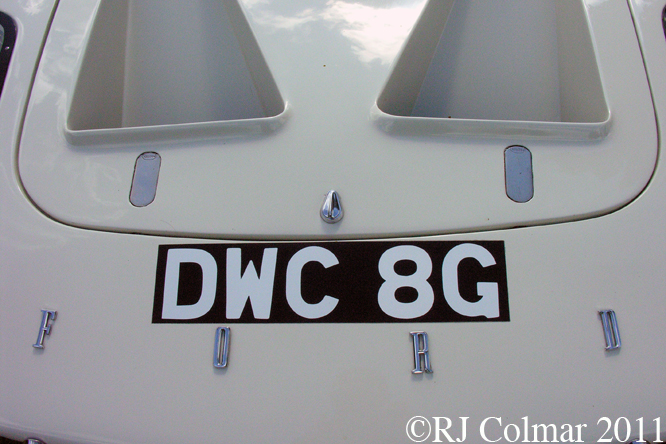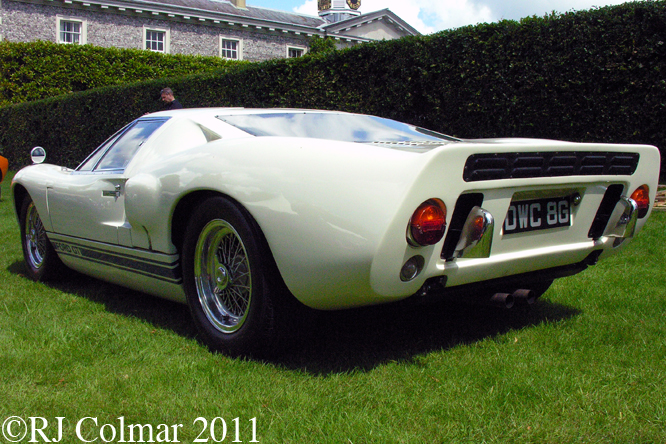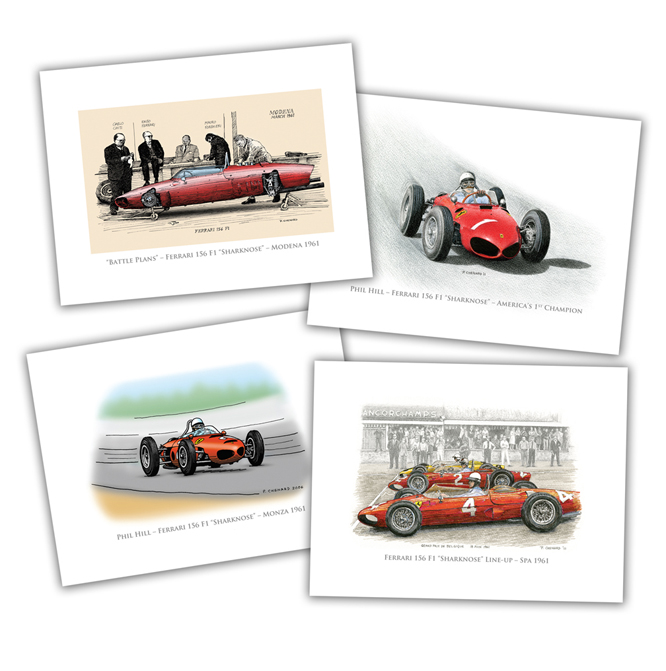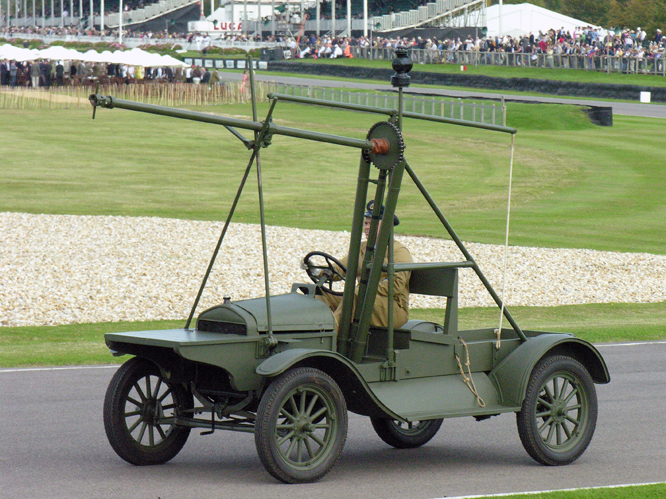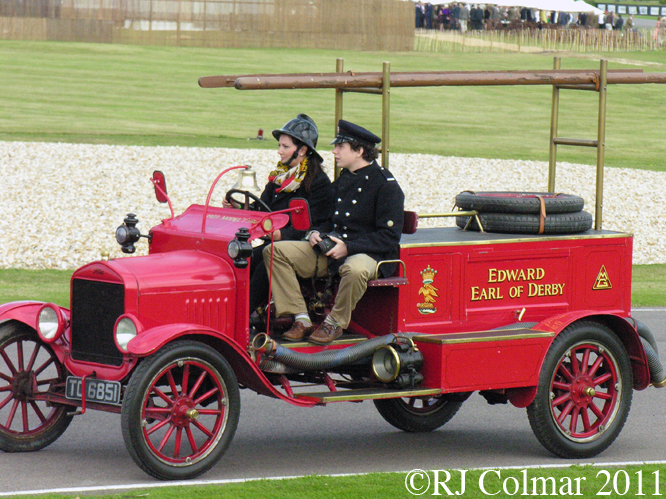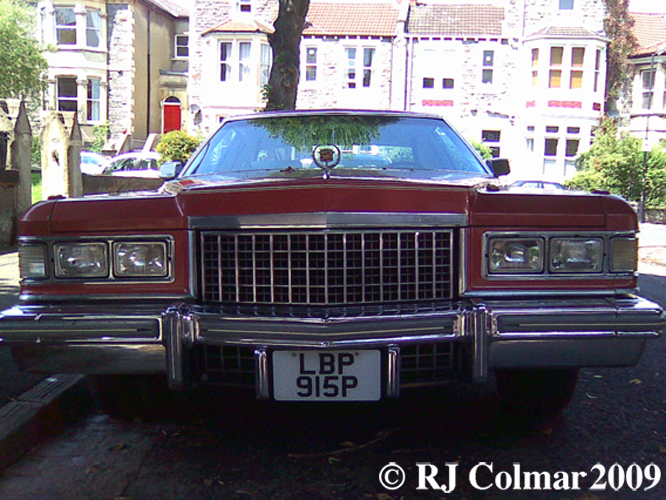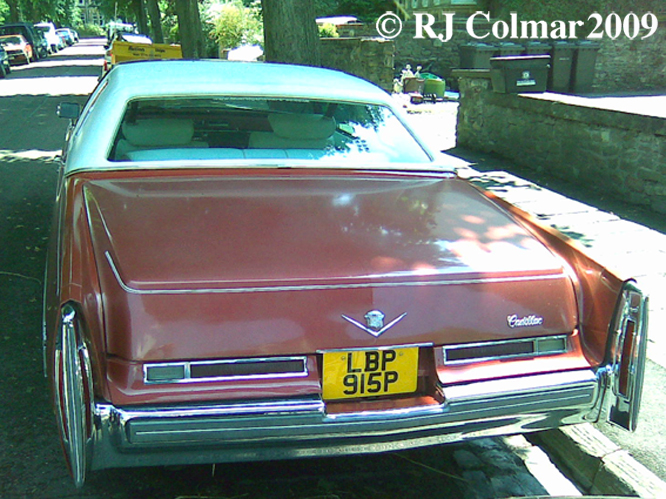The Ford GT Le Mans programme, fueled by Enzo Ferrari’s last minuet snub and refusal to go through with a take over by Henry Ford II, began with a partnership between Ford and Lola. Eric Broadley disagreed with Ford over the use of steel in the construction of the chassis and so the partnership disolved leaving Ford to set up Ford Advanced Vehicles on the same Slough Trading Estate that Lola were operating from.
Chassis #GT/105, seen here at Goodwood, was one of the 12 Ford GT’s manufactured by Ford Advanced Vehicles in 1964, it differs form the earliest examples having built from lighter 22 gauge steel as opposed to the 24 gauge used in the earliest Ford GT’s.
This car was only entered for one race in 1964, the Rheims 12 Hours, where it ran, carrying the #6 on wire wheels, with Richard Attwood and Jo Schlesser qualifying 6th and retiring with transmission problems.
Primarily #GT105 was used for extensive testing as Ford sort to turn the comparatively lumpy beast, compared to the cars used by Ferrari at the time, into a Le Mans contender by spending millions of dollars on optimising every component for durability.
While weight was saved using thinner gauge steel this car was raced with the heavier more powerful 4.7 litre 289 cui iron block Fairlane derived Cobra motor in place of the 4.2 litre 218 cui alloy block Indy derived motor which was originally used on the Ford GT project.
For 1965 development of the Ford GT40 project was moved from Ford Advanced Vehicles to Dearborn where Roger Lunn and his team worked at Kar Kraft on the design of the Mk II version and to Shelby American for race development where the 4.7 litre Cobra motors were prepared and installed, the wire wheels swapped for cast alloys and eventually the Colotti 4 speed gearboxes swapped for ZF 5 speed units.
Team Manager John Wyer remained in Slough where he oversaw the production of the Ford GT based road car project the Ford GT Mk III.
In between private testing chassis #GT/105 was raced at the Le Mans Test weekend in 1965 during which Richard Attwood, John Whitmore amd Maurice Trintignant managed third best time overall behind two Ferrari’s.
In 1966 chassis #GT/105 driven by Peter Sutcliffe and Bob Grossman qualified 19th for the Daytona 24 hours coming home 14th and first in class. At Sebring the same year Innes Ireland and Peter Sutcliffe qualified #GT/105 20th but retired with a blown head gasket.
#GT/105 today belongs to irregular Britcar competitor Richard Meins who is seen at the wheel here. Note the car appears to be fitted with a Mk II nose that has had the bottom edge cut away beneath the radiator, presumably in order to maintain aerodynamic stability and aid cooling.
Thanks for joining me on this “Development Hack” edition of “Gettin’ a li’l psycho on tyres” I hope you will join me again tomorrow when I’ll be featuring a little remembered racing Lotus Esprit. Don’t forget to come back now !



